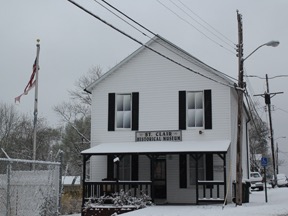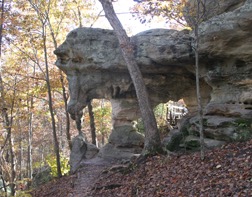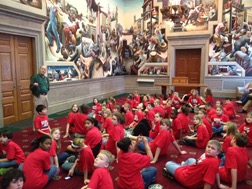Making Tracks
November 2019

As soon as I entered, I knew Lewis Café was a keeper. Hardwood floors. Chrome-plated chairs with vinyl seats pushed up to tables that had local business ads laminated inside. Real pictures on the walls.
And I was right about the home cooking. The onion rings are homemade. The coconut cream pie is homemade. The chili is homemade. The beef is home grown. I was at home on the road, a rare feeling. I counted the booths. Seven. Across from booth row, seven squatty stools stood at the low counter. The place radiated good vibes. Daniel, the server, was the owner’s son. He was enthusiastic, with no hint of preacher’s kid attitude. More important, when he said that today’s blue plate special was outstanding, I believed him.
Outside the storefront window, the snow came down in flakes the size of Frisbees. It made the restaurant even cozier. An elderly couple came in from the blizzard and took a seat. The woman was distressed by the weather and further distressed by her dead cell phone. She couldn’t call her destination to report their travels had been interrupted. I loaned her my cell phone.
Daniel arrived with my meal, and I ate as the snow piled up outside. When I finished, I asked Daniel for directions to the St. Clair Historical Museum.
“Easy,” he said. “Go down Main Street one block and make a right. Can’t miss it.”
Sure enough, I saw the big painted museum sign above the door of an old house on the corner. Through the falling snow I could read the museum’s business hours: “Open 1–4 p.m. Saturdays and Sundays.” I was in luck. It was 2 p.m. Saturday. So I pulled to the shoulder and stepped out into four inches of fresh snow. As I walked to the museum entrance, I noticed that my tracks were the first upon the front porch. I tried the door. It was unlocked. So I entered.
“Hello?”
No answer. The lights were turned off, and it was apparent that no curator was present. That’s understandable. Who would expect a visitor to a small-town museum on a snowy afternoon like this?
I fumbled around in the darkened room for a light switch as a staccato beep began to register in my ears, soft at first but getting louder with each successive beep. The burglar alarm! I hesitated, and considered looking around the museum for a bit while waiting for the police to show up.
Then I envisioned handcuffs and delays and fingerprints and lengthy explanations and 18 coats of paint on the iron bars across the front of the cold confines of a rural jail cell I’d be sharing with some sobering-up wife beater. So I calmly exited the house, shut the door behind me and waited for the cops. Nobody showed up, even though I could see the police station from the porch. I slowly walked toward Erifnus, allowing plenty of time for the authorities to respond to the alarm.
I scraped an inch of new snow off Erifnus’ windshield, climbed in the cockpit and backed onto a side street. I took my time turning around, leisurely driving back up to the main street, and looked for a policeman. But nobody. They must’ve been busy attending to a dozen fender benders on the slick streets. I drove around town taking pictures and circled back to the museum. The alarm was turned off. Nobody was around. We made tracks out of town.
Visit JohnDrakeRobinson.com to read more about John’s travels.
Geological Gems
July 2019

Our family loved our autumn weekend at Sam A. Baker State Park, snuggled into rugged foothills of the St. Francois Mountains. The park—situated along Big Creek where it empties into the St. Francois River—is one of the oldest jewels in Missouri’s state parks system. Most of the cabins were built of native stone and timber by those venerable Depression-era lifelines, the Civilian Conservation Corps and the Works Progress Administration. The lodge is a classic, serving up meals to reload your energy level for more exploring on foot, on horseback or in a kayak.
But it was time to go back home.
Our family packed the van and drove home through the Arcadia Valley, budgeting enough time to stop for boulderous adventures at that pair of guaranteed kid pleasers, Johnson’s Shut-Ins and Elephant Rocks State Parks.
Back on the road home, along Highway 32 between Farmington and Sainte Genevieve, we spied a small brown sign pointing to Pickle Springs Natural Area. In my mental rolodex, Pickle Springs (a national natural landmark) was a blank page.
We took the bait.
We parked next to the only other vehicle in the lot and walked a few yards toward the trail, bending an ear toward the woods, listening for the owners of the pickup parked next to our van. In the October crisp, there was no sound.
Immediately we reached a loop trail and took the path to the right, stopping every few yards to peer into the wilderness. Within seconds, steep walls of a box canyon enveloped us. Sandstone boulders the age of Pluto towered over our heads, spring water seeped beneath. Intrigued, our family caravan walked single file down the path, powered by this unfolding carnival for the eye. With perfect theatrical timing, mother nature arranged her priceless sculptures before us.
Headwall Falls. Rockpile Canyon. Pickle Springs.
I wondered if John Muir or National Geographic ever visited this spot, with its collection of weather-beaten sandstone shapes, creations that Bryce Canyon would be proud to display.
Dome Rock. Owl’s Den Bluff. Mossy Falls.
A part of me wants to keep these charms secret. They’re rewards for observant visitors who’ve done their research. Another part of me shouts to the contrails that crisscross the heavens, punctuated by gleaming silver dots that carry passengers to LA and New York. “You don’t know what you’re missing.”
We greeted two backpackers as they approached. These were the guys from the pickup truck, parked in the lot. Father and son, by the looks of them. They told us they were hiking this trail and other nearby geological gems tucked into the St. Francois Mountains, the oldest mountains in North America. Hawn State Park. Buford Mountain. Ketcherside Mountain. Royal Gorge Natural Area. Iron Mountain Lake. Millstream Gardens. Bismarck Conservation Area.
The backpackers foreshadowed what would unfold on the rest of our two-mile trek along the Pickle Springs trail. We marveled at the stunning beauty of this place.
Terrapin Rock. The Keyhole. Cauliflower Rocks.
The discord of world events seemed a billion miles away. Far away, too, seemed the violent Civil War death of William Pickles, for whom this spot is named. And even though home was calling, we completed this tranquil trail in the time it takes to watch an episode of Game of Thrones.
Visit JohnDrakeRobinson.com to read more about John’s travels.
This Land is YOUR Land
May 2019

You can drive there. Or take the train with your kids. But once you reach downtown Jefferson City, walk around your property. The land you own there is filled with priceless surprises.
Of course, you share the deed with six million other Missourians. No matter. These buildings are your monuments, your history, your art.
Begin at your biggest property—the Missouri State Capitol, with the single most valuable work of art this side of Eads Bridge. Never mind that its hundred-year-old skin is getting a rejuvenating facelift; check out the treasures inside. Your state capitol is a monstrous monument to Missouri—more than a quarter million square feet of floor space—a building so large it creates its own weather. It’s a museum with beautiful artwork around every corner. And in a room on the third floor you’ll find a Missouri masterpiece. The man who created it had the perfect recipe for a hearty feast…for the eyes.
In 1936, some wise Missouri ancestors invited this master of the ancient egg tempura technique to cover the walls of the capitol’s House Lounge. He took ninety dozen egg yolks, beat them and poured them into separate tins. He added a pinch of indigo here, a dash of chalk there, some ceruse, charcoal, crushed brick and Indian paintbrush. With a little water, he mixed each color, and applied them in a pattern to a flat surface, where he let them dry to perfection.
The results turned out tastier than any cookbook cover. And the cook welcomed curious onlookers into his kitchen with only one admonition: no suggestions, please.
Oh, they tried to suggest anyway. Some legislators even tried to stop the project and strip artist Thomas Hart Benton of his commission. How dare he adorn a state capitol with scenes of lynchings, beatings, shootings, robberies and mob bosses? Well, it’s Missouri, where the Wild West began. Benton only describes its turbulent history. The James Gang robbed a train. Boss Pendergast fleeced Kansas City. Frankie shot Johnnie. And Huck and Jim set out for adventure.
Speaking of Eads Bridge, don’t miss the art on the second floor. In 1919, artists from around Missouri and from the Taos, New Mexico art colony painted lunettes in the capitol mezzanine. Masters like Berninghaus and Wyeth depict scenes at Wilson’s Creek and Eads Bridge, the Pony Express and the Santa Fe Trail, Washington Irving and Kit Carson at Arrow Rock Tavern, and the first steamboat to reach Franklin.
Jefferson’s Landing is the oldest surviving riverfront landing on the Missouri River. Some of the buildings date back to 1839. Today, they’re museums, including the Elizabeth Rozier Gallery, inside the old Union Hotel. Organized tours of Jefferson’s Landing operate Tuesday through Saturday, 10-4 p.m. until December. There’s no admission—remember, these are your properties—and walk-ins are welcome.
Watching over the landing is a stately old building with a mansard roof. Built in 1871, the Missouri Governor’s Mansion is one of America’s oldest executive mansions. Check mansion.mo.gov for a schedule of free guided tours.
Just up the street, the “bloodiest 47 acres in America” is open for history tours, ghost tours, even overnight ghost encounters. That’s the good news. The bad news? You don’t own the old Missouri State Penitentiary anymore. For ticket prices and availability visit MissouriPenTours.com/contact.php.
It’s time to give your old properties a visit.
Healing Hands
February 2019
